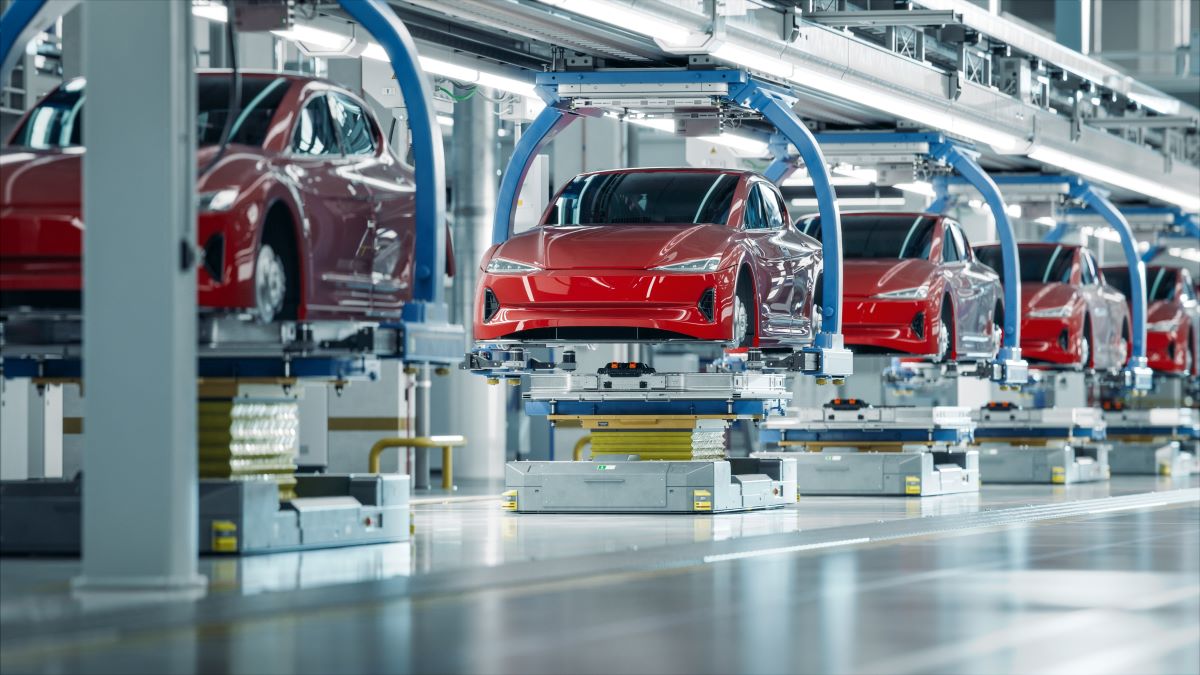UN Trade and Development chief Rebeca Grynspan outlined four key actions: investment in infrastructure, fairer trade and market access, transparent governance, and faster knowledge sharing.
© Shutterstock/IM Imagery | A production line of electric vehicles.
At the 29th UN climate summit (COP29), global leaders are gathering this week and next in Baku, Azerbaijan to address the urgent need to ensure developing countries rich in critical minerals benefit equitably from the energy transition.
As the climate crisis deepens, demand for resources needed to manufacture clean energy technologies is surging. According to the International Energy Agency (IEA), global demand for minerals like lithium – vital for electric vehicles – is set to triple by 2030 and quadruple by 2040.
For resource-rich developing countries, the surge offers an opportunity to increase prosperity, reduce poverty and drive sustainable development.
Yet, as UN Secretary-General António Guterres warned at a high-level event on 13 November, “Too often we see the mistakes of the past repeated in a stampede of greed that crushes the poor.”
To address these concerns, Mr. Guterres established a Panel on Critical Energy Transition Minerals, with UN Trade and Development (UNCTAD) leading two of the panel’s four workstreams.
Unlocking potential beyond raw exports
UN Trade and Development chief Rebeca Grynspan echoed Mr. Guterres’s remarks, emphasizing the risk that critical minerals – like other commodities – could create a "development trap" for resource-rich, vulnerable nations.
Nearly half of UN member countries are commodity dependent, relying on raw materials for over 60% of their export revenue. This dependence affects 66% of small island developing States, 83% of least developed countries and 85% of landlocked developing nations.
To fully leverage the potential of critical minerals and avoid the pitfalls of dependence, developing countries rich must urgently move up global value chains.
Africa, for example, holds over a fifth of the world’s reserves of metals critical for the energy transition, but much of the value-added manufacturing in green technology happens elsewhere. The continent captures only 40% of its potential revenue from critical minerals and holds just 1% of global photovoltaic capacity.
Similarly, no African or Latin American nation is a major player in producing or trading materials essential to electric vehicle batteries.
Seizing the full value in clean technologies
Currently valued at $325 billion, the critical minerals market could reach $700 billion by 2040, according to IEA projections. However, the clean technology sector – including electric vehicles, batteries and solar panels – already stands at $700 billion and could skyrocket to $3.3 trillion by 2035.
This means the market for these minerals is just one-fifth of the market for the technologies they enable – a gap that could widen further. This disparity underscores the need for developing countries to move beyond raw mineral exports and move up clean technology value chains.
Four key actions for a just energy transition
Ms. Grynspan outlined four key actions to help resource-rich developing nations maximize the benefits of critical minerals:
- Investment in infrastructure and productive diversification: A $225 billion investment shortfall in critical mineral mining projects exists in the Global South.
- Fair trade practices and market access: Currently, tariffs on clean technology are on average twice as high as those on fossil fuels.
- Transparency and good governance: Strong institutions, transparent regulations and local governance are crucial to ensure that the benefits of critical mineral wealth reach people.
- Knowledge sharing: Technology development is extremely fast, but technology transfer remains very slow.
“The energy transition represents a historic opportunity,” Ms. Grynspan said. “Let us seize this moment. Let us work together to build a future where critical minerals become a catalyst for prosperity, leaving no one behind.”

